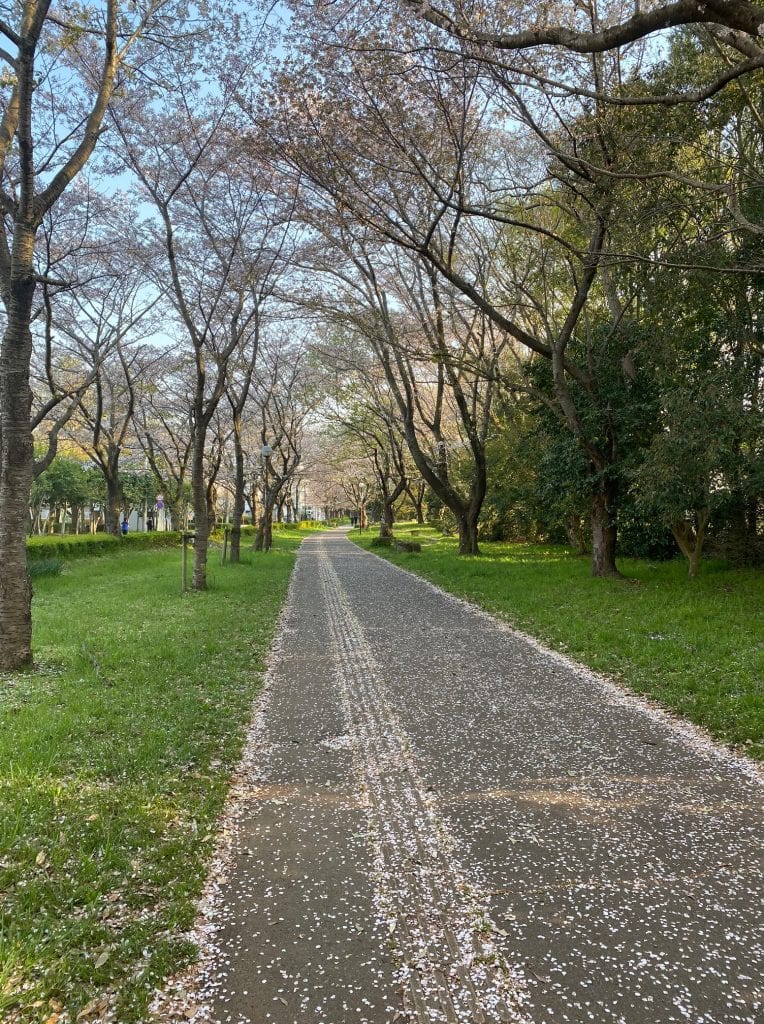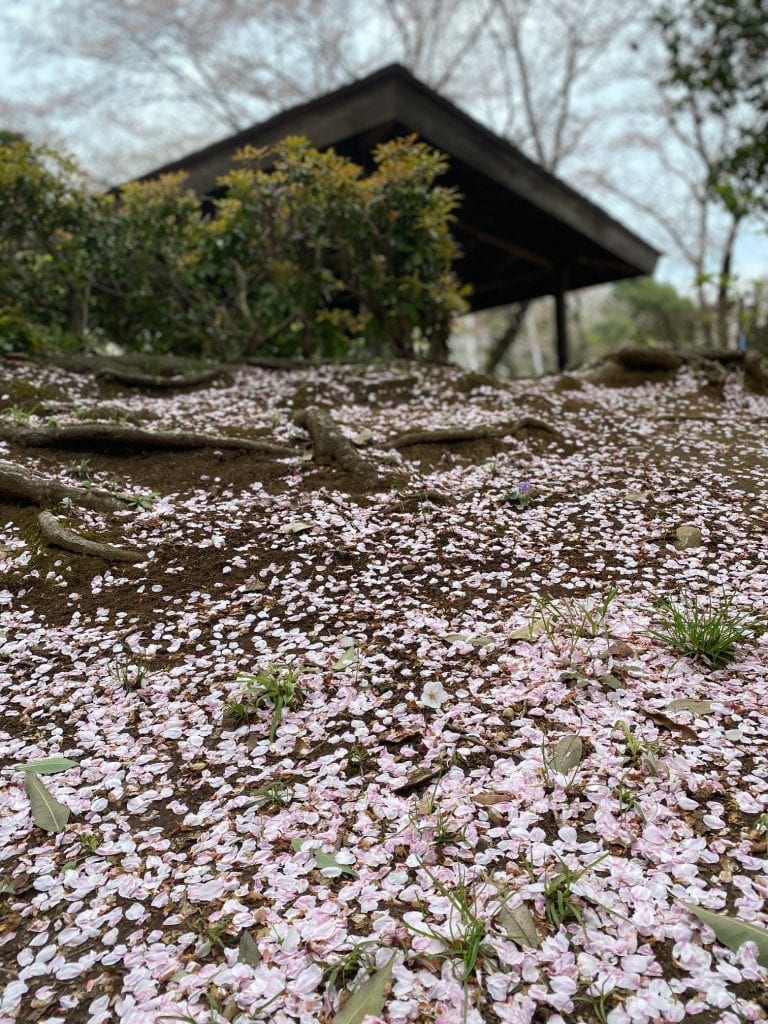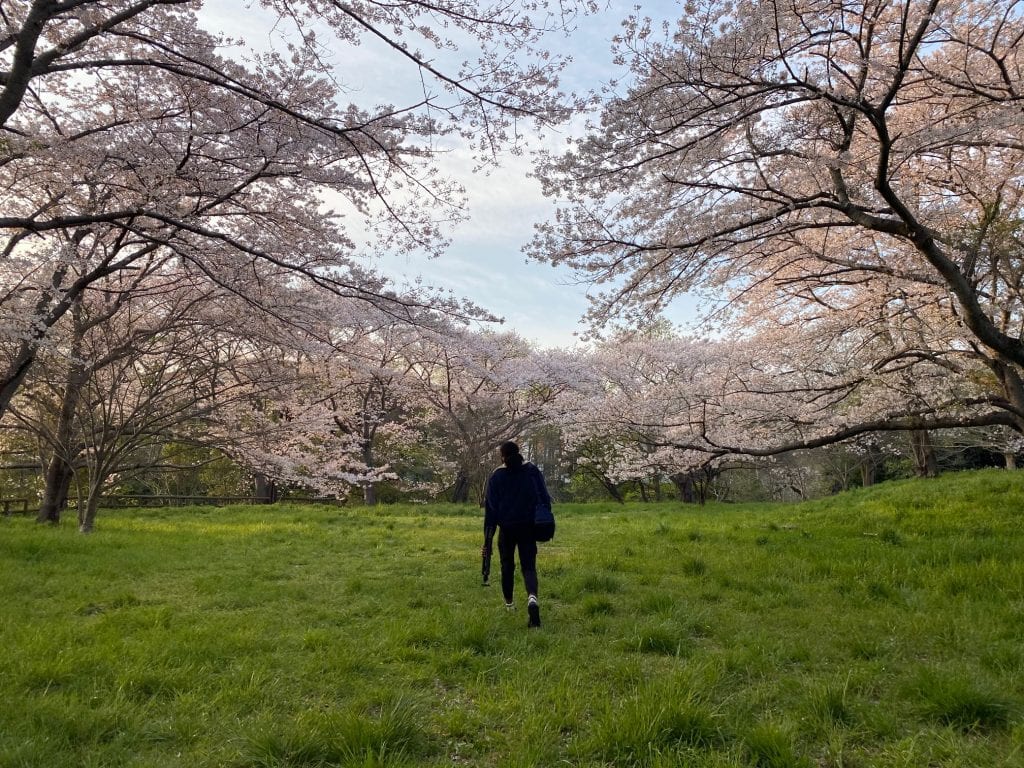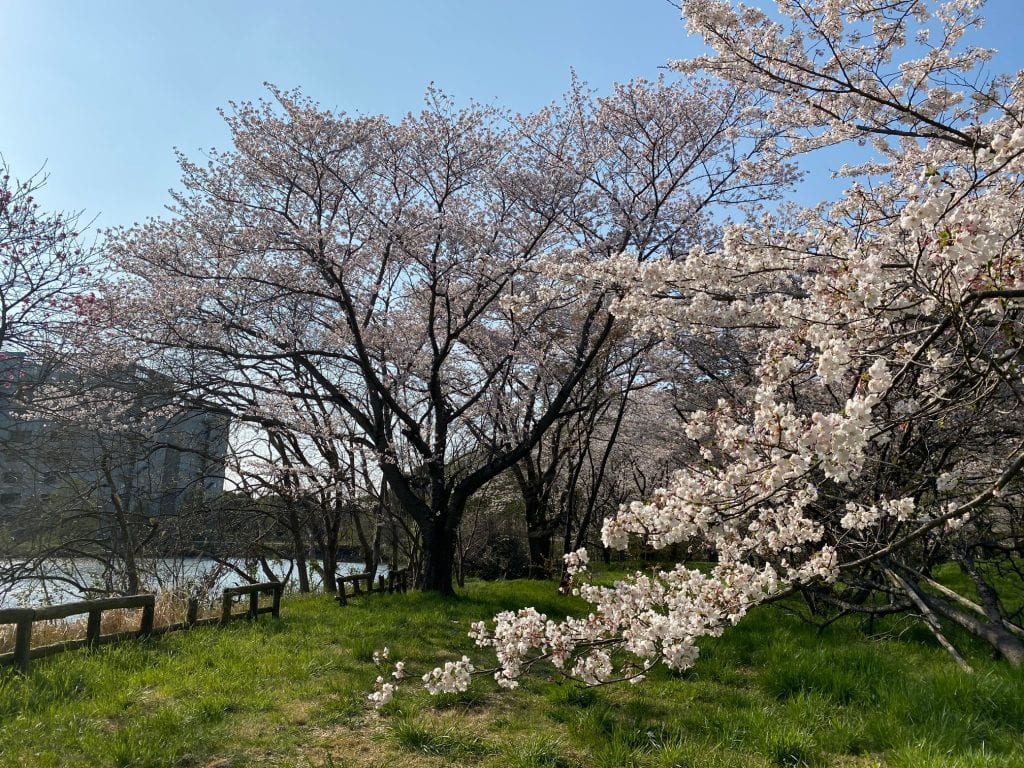The beginning of spring marks the start of the new work/school year in Japan. The harbinger of this change of season is the cherry blossom tree. The bloom starts as early as January in southern locations like Okinawa, and as late as May all the way up North in Hokkaido. On the mainland the peak usually occurs in late March/early April. So if you’re planning a spring trip and want to witness this flower bloom, you’ll need to plan your dates carefully.
The history and symbolism of the cherry blossom in Japan
The ritual celebration of hanami has its routes in the Nara period, almost 1400 years ago. Initially, the flower of choice for the Imperial Elite to admire was the plum or ume blossom. As time went on, the cherry tree replaced its counterpart. By the Edo era this practice drinking and eating under cherry trees had spread to the common class.
Around this time, the Tokugawa shogunate (Edo period government) planted many cherry blossoms alongside rivers. The reason for this was that the river banks had repeatedly broken down, and it cost the government a large amount of money to maintain the banks. The shogunate utilized the popularity of flower viewing to solidify the foundation by encouraging people to walk around the rivers and so tread down on the bankside paths. This is why you’ll find many cherry blossom trees lining the rivers in Tokyo.
Cherry blossoms have a notably short lifespan. At peak bloom they may last a week before the petals starts to fall. This transience has been likened by some Buddhist scholars to the brevity of life and acceptance of what the future brings. Watch a couple of anime series or Japanese movies and you’re bound to see this metaphor used at least a few times. Imperials were known to plant cherry blossom trees in colonies as a symbol of territorial claim. During World War 2, kamikaze pilots would even paint cherry blossoms on the panels of their bomber planes – the falling petals a symbol of sacrifice. You’ll also find the use of cherry blossoms in more modern context in the mascot for the 2020 Tokyo Olympic Games – Someity. The name comes from a variety of cherry blossoms tree (Someiyoshino) and the English phrase “so mighty”.

A sidewalk littered with petals 
The end of the cherry blossom season
An early bloom and lack of crowds for 2020
This year’s hanami celebrations were noticeably quieter due to the distinct lack of foreign visitors. Thank you COVID19! Despite government warnings, locals still flocked to some of the more popular spots. Many were hesitant to forgo their yearly ritual of picnics under the cherry blossom trees. I have a sneaking suspicion that some Japanese residents quite enjoyed the absence of huge crowds. Masses of people can actually make some hanami celebrations quite unpleasant.
This year the cherry blossoms also reached their peak a whole week earlier than last year. Some lay the blame squarely on the shoulders of climate change. In recent years these blossoms have been appearing earlier and earlier. In Tokyo this year, the cherry blossoms were out in full force by the 21st of March. Residents could still be seen taking in the views with many sporting facemasks as a precaution.
When should you visit Japan to see the cherry blossoms?
This is always a difficult question to answer as the dates vary each year. The JNTO website posts a prediction each year, which is usually close to the truth. Most visitors to Japan arrive in Tokyo and spend at least a few days exploring this metropolis. If you plan your trip to place you in Tokyo during the last week of March, it is likely that you encounter these beautiful blossoms during your time here.
The cherry blossom trees in Kansai generally bloom around the same time. This means that if you spend around 10-days in Japan, traveling from Kanto (Tokyo) to Kansai (Kyoto) during the last week of March, the chances of you seeing cherry blossoms at their peak, or near peak, are good.

A quiet grove outside of the city 
Cherry blossoms in peak bloom
This is useful if you’re sticking to the well-worn Golden Route. If you’d prefer to explore a bit further afield and avoid the worst for the crowds, I’d recommend visiting a town off the tourist track. This will require a bit more research to make sure your timing is good, but there are some fantastic cherry blossom spots in prefectures like Aichi, Fukushima and Ibaraki.
Where to start planning
The internet is packed full of articles detailing some of the best cherry blossom spots. However, if you’re not keen to sift through hundreds of pages, take a short cut and join and tour or get a specialist to custom-design your trip. Check out our Tanuki Cherry Blossoms Group Tour or have a look at our sample itineraries page for more inspiration!
